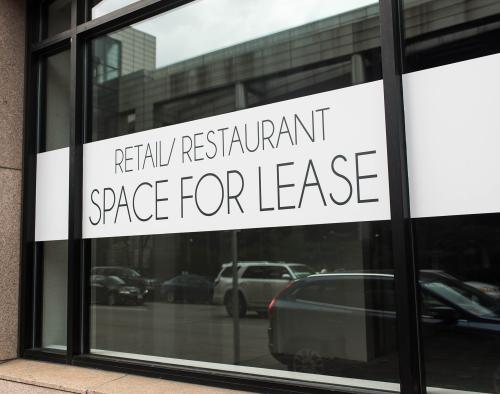Can a town concerned about blight require that a grocery store be operated by Trader Joe’s or Whole Foods rather than a dollar-store chain? In a 1975 decision, New York’s high court said no, rejecting a zoning commission’s requirement that a grocery store be owned and operated by a specific high-end chain. The court reasoned that zoning cannot regulate ownership.
Zoning treatises have long cited the maxim that zoning governs uses, not users. In other words, zoning governs what goes where, but it cannot say who goes where.
Except, that is, when it comes to housing. Historically, courts across the country have looked the other way in cases in which zoning requires housing to be occupied by the person who owns the property. Such owner-occupancy requirements have the consequence of constraining housing supply, thus affecting affordability and decreasing renters’ choices about where to live.
Owner-occupancy requirements are back-door attempts to block renters
Cities and towns argue that owner-occupancy requirements ensure absentee landlords and renters do not cause blight. In addition, rightfully or wrongfully, many people blame “investors” for some or all of today’s housing affordability crisis.
Restrictions on rentals appear in zoning codes, homeowners’ association rules, rules issued by subsidized lenders, and local ordinances. For example, when California preempted local prohibitions on duplex conversions and lot splits in the Housing Opportunity and More Efficiency (HOME) Act, commonly referred to as SB9, it specifically permitted local governments to adopt owner-occupancy requirements for these splits. Owner-occupancy requirements are particularly common in zoning rules around accessory dwelling units (ADUs), a sampling of which are summarized in Table 1.
Table 1: Owner-occupancy rules are common for ADUs
| Jurisdiction | Code | Terms |
| Washington, D.C. | D.C. Mun. Regs. Tit. 11, § 11-U253.5 | “Either the principal dwelling or accessory apartment unit shall be owner-occupied for the duration of the accessory apartment use.” |
| Denver | Denver, Colo. Zoning Code § 11.8.2.2(C) | ADU owners in single-unit zone districts must “occupy either the primary dwelling unit or the ADU use as [their] legal and permanent residence . . . as evidenced by voter registration, vehicle registration, or similar means.” |
| Provo City, Utah | Provo City, Utah City Code §§ 14.06.020, 14.30.030(4) | For single-family properties with ADUs, “either the main dwelling unit or the ADU must be occupied by an owner occupant,” though the owner can take a “bona fide, temporary absence” in certain circumstances. Owners must provide documentation to the city to prove owner occupancy upon request. |
| Bellingham, Wash. | Bellingham, Wash. Mun. Code § 20.10.036(B)(4)(c) | ADU property owners must record covenants that they will “reside on the premises, whether in the primary or accessory dwelling,” which are also binding on successive owners. One-year exceptions are provided in cases of “hardship.” Owners must submit periodic affidavits confirming their continued occupancy. |
| Fairfax County, Va. | Fairfax Cnty. Zoning Ordinance § 4102.7.B | “Either the accessory living unit or the principal dwelling unit must be owner-occupied.” |
| Greenwich, Conn. | Greenwich, Conn. Mun. Code § 6-99 | “The owner of record must reside in either the accessory dwelling unit or the primary dwelling. An affidavit acknowledging the residency is required from the property owner.” |
| Eagan, Minn. | Eagan, Minn. Code of Ordinances § 11.70.32 | Property owners must “reside in either the primary residence or the ADU as their permanent residence” for at least 185 days per calendar year. |
| Brookhaven, N.Y. | Brookhaven, N.Y. Town Code § 85-258 | “The owner(s) of the lot upon which the accessory apartment is located shall reside within . . . either the larger dwelling unit or the accessory apartment. No other owner(s) shall own a larger percentage collectively or individually than the owner-occupant.” |
| Nassau County, Fa. | Nassau Cnty. Land Dev. Code § 28.15(K) | “In instances in which the accessory dwelling is used for a rental property, the existing single-family home on the parcel must be the primary residence for the property owner and hold an active homestead exemption [from property taxes].” |
| New Haven, Conn. | New Haven, Conn. Ordinance No. OR-2021-0014 (2021) (amending New Haven, Conn. Zoning Ordinance § 22) | “Accessory dwelling units shall only be permitted when the property owner lives on the property, within either the principal dwelling or accessory dwelling unit.” Exceptions apply for temporary sabbaticals or hospital or assisted living admissions. |
| Arlington County, Va. | Arlington Cnty., Va. Zoning Ordinance §§ 12.9.2(C)(3) | If multiple families occupy the property, “the owner of the main dwelling must occupy either the main dwelling or the accessory dwelling as his/her primary residence.” While the ordinance also allows the property to be occupied solely by non-owners, this requires that “the entire property . . . be occupied by no more than one family.” |
These owner-occupancy rules have several negative effects on equity, efforts to build multifamily housing, and the overall housing supply. Because renters typically have lower incomes than homeowners and are racially more diverse, owner-occupancy requirements affect the economic and demographic makeup of neighborhoods. Owner-occupancy requirements also prevent property owners from developing repeat expertise in acquiring and renovating existing housing stock to add ADUs; as a result, lenders are less likely to finance ADUs. Finally, owner-occupancy rules constrain supply because each existing house can only give rise to one rental unit, not two, and homes owned by non-residents cannot add an ADU. (Relatedly, many codes are explicit that if an investor purchases an owner-occupied home, it must leave the ADU vacant.)
Local governments could avoid these impacts by simply regulating upkeep. Rather than assume that renters will be bad neighbors, local officials could enforce housing codes, blight ordinances, and noise ordinances. Instead, they rely on owner-occupancy as a shortcut for regulating maintenance.
In upholding owner-occupancy requirements, courts do not explain how these requirements relate to property maintenance. Instead, they rely on unspoken assumptions and biases about renters. In the few cases where courts have interrogated the nexus between homeownership and home maintenance, they have refused to enforce owner-occupancy requirements. In the filings for a 2019 New Jersey case, zoning officials argued that an owner-occupancy requirement would ensure “adequate supervision” of a two-family house. In response, the property owner’s lawyers cheekily noted that it was “unclear…whether the public was concerned about the tenants adequately supervising the [owners] or if the concern was the [owners] were expected to adequately supervise the tenants.” In any event, the court concluded that “the status of a house’s occupant as a property-owner rather than as a tenant is no guarantee that he or she will be a law-abiding and considerate neighbor.” The court refused to allow local officials to “functionally delegate to a private landlord a portion of the municipality’s police powers and its own exclusive responsibility to enforce the local laws and keep the peace.”
A decade earlier, North Carolina’s high court reached the same conclusion, finding that an owner-occupancy requirement had “no foundation in reason” and bore “no substantial relation” to public health or welfare. And recently, a federal appeals court also ruled that even if an owner-occupancy requirement for short-term rentals did advance local policy goals related to nuisance prevention and neighborhood character preservation, those same policy goals could have been achieved through alternative means. Because the court concluded that the owner-occupancy restrictions discriminated against interstate commerce, the availability of non-discriminatory alternatives rendered the owner-occupancy requirements unconstitutional.
Policymakers shouldn’t rely on zoning to solve all problems
Owner-occupancy requirements are one example of “zoning creep,” or when planners and politicians use zoning to address problems well outside the scope of land use and zoning regulations. These problems could—and should—be regulated directly in order to avoid the consequences (sometimes intended) of using zoning. Owner-occupancy requirements, for example, tend to exclude renters from a neighborhood. Similarly, minimum lot sizes—which have devastating effects on housing affordability, segregation, and the environment—are justified as a way to manage stormwater and wastewater, even though public health codes already regulate stormwater and wastewater.
A few state and local legislatures have seen fit to address this problem through statute or ordinance. But there is a role for the courts here as well—a role that most are failing to fulfill. Outside of New Jersey and North Carolina, courts have been friendly to owner-occupancy requirements. In case law, most courts acknowledge that zoning governs use, not ownership. Nevertheless, courts defer to towns’ allegations that owner-occupants are better stewards of property.
So long as courts refuse to interrogate the nexus between a zoning ordinance’s claimed purpose and its actual effect, there will be no judicial remedy for zoning creep. Thankfully, courts in New Jersey and North Carolina have shown a way forward—one that courts in other states ought to emulate.




Commentary
How owner-occupancy regulations are contributing to the housing crisis
October 27, 2022